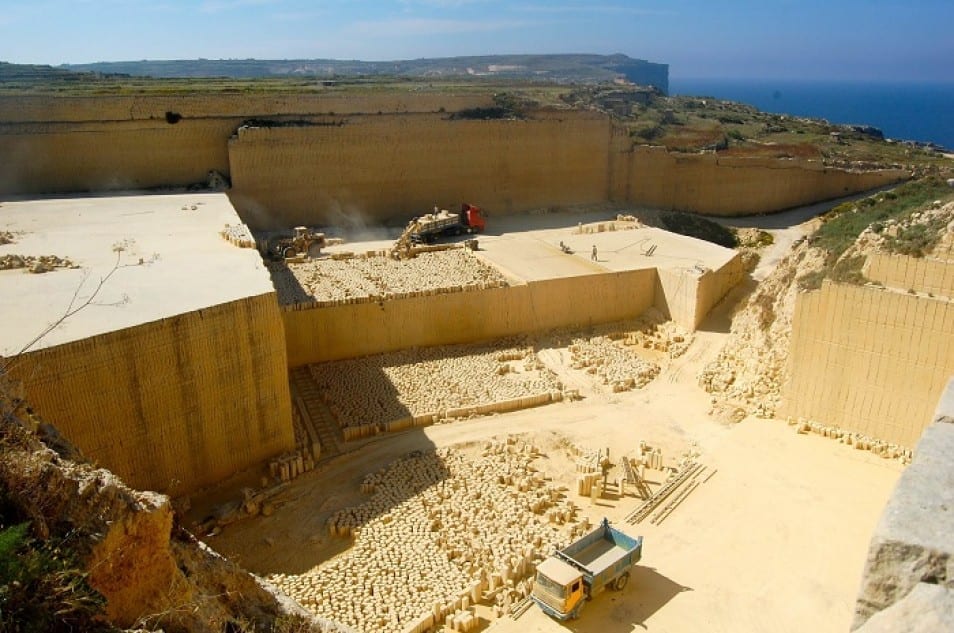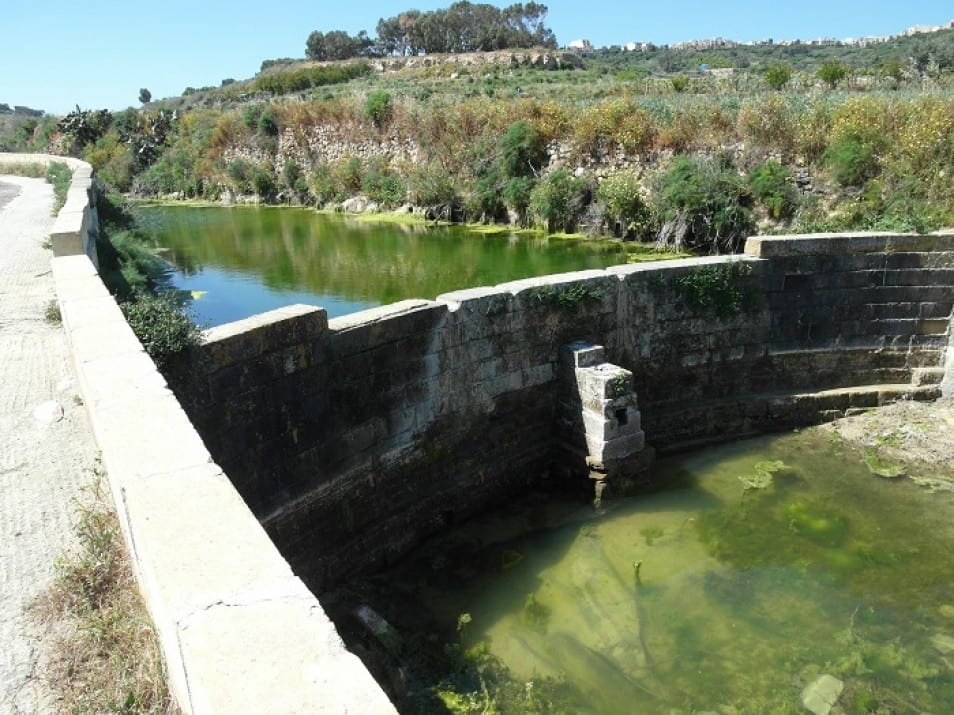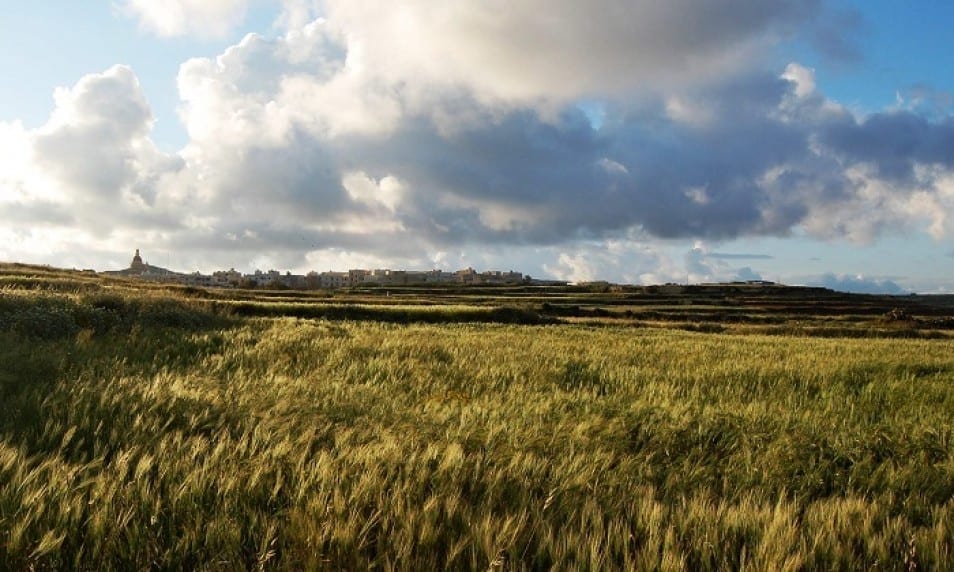Malta Confronting Water Challenges
Malta represents the water supply challenge confronting many countries in the Mediterranean region. Although its population has an abundant, affordable and reliable supply of safe drinking water, its aquifers are under pressure from over-abstraction, seawater intrusion and pollution from both urban and agricultural sources. As the population becomes more affluent, the pressures on water quality and availability increase. Desalination technology could supply all of Malta’s drinking water needs, but being an energy-hungry option in a country dependent on imported oil, it would be neither economically nor environmentally sustainable. The current water challenges in Malta can be solved through innovation, regulation, good governance and cooperation. If achieved, it will be a model for water management.
Malta is essentially an aquifer (a rock containing usable water) made mostly of limestone (a common aquifer rock holding water in interconnected fractures and cracks), which originally formed on the ocean bed some 25 million years ago. The discovery of fossils from animals originating in North Africa and Europe is evidence that geological force formed a land bridge between both continents some 10 million years ago. During ice ages, the sea level dropped and then rose again as the ice caps receded. Following the end of the most recent ice age, around 12,000 years ago, the sea rose again leaving the islands of Malta and Gozo isolated.
Malta has two main aquifers. The larger and deeper “sea-level aquifer” forms a solid foundation and provides the largest source of groundwater supply. It reaches the surface in some places (“outcrops”) where rainfall can directly infiltrate and replenish the aquifer. In other areas, it is covered by clay, on which lies another limestone unit (“the upper limestone”).
This upper aquifer consists of many small isolated units, which provide only locally-important groundwater supplies. Historically, these units were the source of springs with groundwater flowing out at its edges. Springs are now rare due to groundwater abstractions lowering the water tables. Near its south-west coast, close to the Hagar Qim and Mnajdra temples, there are a number of man-made excavations in the limestone rock surface believed to be 5,000 years old, which collect rainwater and are still used for irrigation today.
The paradox is that solving earlier water supply challenges has led to another: Malta’s current use of water is unsustainable.

Historically, Malta had enough rainfall to sufficiently replenish the aquifers with fresh water. In the main sea-level aquifer a “freshwater lens” was created – very typical of small islands – with one beneath the main island of Malta, and the other beneath the smaller island of Gozo. A freshwater lens occurs due to the difference in density between freshwater and seawater; similar to a ‘low density’ iceberg floating in ‘high density’ seawater. Like an iceberg, the volume of a freshwater lens below the surface (represented by sea level) is much larger than that above it. For every meter of freshwater above sea level, there is 40 meters below. The ‘lens’ is not a continuous body of water, but consists of the water contained in millions of interconnected pores and cracks in the rock behaving as a single body representing 1-5% of the rock volume. The lens may be static in shape, but not in water flow; it is regularly replenished by rainfall and with freshwater moving through it and escaping at the edges to the seawater. In its natural condition the lens shape is stable with some seasonal fluctuation in size.
On islands with small populations, fresh- water can be abstracted sustainably from near the surface, via natural springs or shallow wells, with replenishment matching or exceeding the water used. However, as populations and demand for water grow, an imbalance occurs. If the water table is lowered by just 0.5 meters for a prolonged period, then the base of the lens will rise by 20 meters. The effect is exacerbated by modern drilling technology, which allows wells to go tens of meters deep. When deep wells are over-pumped, then “up-coning” occurs whereby saltwater is sucked up into the lens thus causing further imbalances. As the freshwater lens continues to shrink, seawater intrusion progresses and groundwater quality dete- riorates thereby forming a combination of encroaching seawater from below and surface pollution from urban sewers and agricultural fertilizers and pesticides.
Malta has invested in schemes to carry freshwater from damaging flash floods to the sea, while paying to convert seawater to freshwater!
As an island nation, with extremes of dry weather and even drought, agriculture has been crucial for survival. The countryside is blanketed in a patchwork of cultivated fields almost exclusively family-owned and watered by wells and irrigation. A century ago, the local water cycle and freshwater lens were in balance. Like any present-day under-developed region, easy access to safe drinking water was unreliable. Habitants took their water from natural springs and shallow wells. There was also a tradition that each house had a cistern in which to store rainfall. This was a legal requirement since the times of the Knights of St. John that has seen little enforcement in recent decades.
Founded in Jerusalem in 1023, the Knights of St. John dominated Malta for 270 years. The Knights settled in Malta in 1530 as a ‘safe-haven’ from the Ottomans and were eventually removed by Napoleon in 1798. Malta then joined the realm of the British Empire and Commonwealth. The islands were besieged in World War ii, achieved independence in 1964, and became a republic in 1974.
During the 20th century access to water improved. Deep wells were drilled across the islands to supply drinking water and agricultural needs. Horizontal galleries were extended to intersect more of the shallow aquifers to provide more water. The first desalination systems were built in the 1960s. Infrastructure was installed to distribute water in the growing urban areas. While the situation improved, by modern standards urban water supply remained unreliable with bursting pipes and reliance on privately-owned water delivery companies as back-up to fill rooftop tanks for domestic use.
The need for action was triggered by periods of severe drought in the late 1970s and early 1980s, which resulted in the drinking water supply being limited to sometimes only 2-3 days a week. Simply excavating more wells and galleries was not a solution as the aquifers were already heavily exploited with seawater intrusion worsening the problem.
The first step was to commission a new desalination plant that was built in 1982. The seawater reverse osmosis facility of Ghar Lapsi was one of the largest desalination plants in the world, with an installed capacity of 20,000 m3 per day. Contrary to expectations this was not the solution. Greater supply reliability led to greater demand and the infrastructure could not cope with the increased flows that were lost in leakages due to the pressure of over-capacity. These problems resulted in a multi-year network mapping project, pressure management, repairing leaks and replacing pipes. The desalination capacity has grown with additional plants producing a combined total of 100,000 m3 / day.
During recent decades, water use for farm- ing has also augmented considerably. Increased wealth and new technologies for drilling, pumping and irrigation have contrib- uted to a proliferation of thousands of wells. Groundwater is still used today. Public water supply comes from about half groundwater and half desalinated water, while the agricultural sector uses mostly groundwater and some surface water. Trying to ameliorate earlier water challenges paradoxically has created new ones making Malta’s current use of water unsustainable. Ironically, Malta has invested in schemes to carry freshwater from damaging flash floods to the sea while paying to convert seawater to freshwater!
Most buildings in Malta are made of golden limestone. As a result, Malta is dotted with quarries of which many are now unused. These have been proposed as a place to divert flood waters to encourage aquifer recharge instead of letting the water flow to the sea. However, floods are worse in the valleys, whereas quarries are mostly on higher ground. Innovation is essential since pumping water uphill is impractical and costly.
The current water challenges in Malta can be solved through innovation, regulation, good governance, and cooperation.

Malta is now one third urbanized and with the extensive paved areas, the effects of floods have worsened. Tunnels have been built to carry the water rapidly and directly to the sea, but this gives even less chance of replenishing the aquifers. For centuries, every house had a storage cistern to col- lect rain from the roof. While still officially a requirement, this has not been enforced for many years. However, there is now a greater effort to get home-owners to ensure these are in working order. While cisterns are not used for drinking water today, they can be used for such things as irrigation and help reduce flash-flooding and overloading of wastewater systems.
Most of Malta’s treated wastewater is discharged into the sea. The technology exists to convert wastewater into higher quality water, whether for irrigation or drinking, less expensively and with less energy than seawater. As in most cultures, there is an instinctive aversion to the concept of reusing wastewater for drinking or food-associated use. While use as drinking water is the hardest concept to accept, using treated wastewater for irrigation or aquifer replenishment is more conceivable. Some pilot projects are starting to use treated wastewater in this way, not for drinking.
“Clean Water” The first major project to reuse water for drinking was in Windhoek, the capital of Namibia. Surrounded by the Namib and Kalahari deserts,Windhoek is among the most arid places in Africa, and one of the only places in the world that practices“direct potable reuse” on a large- scale, with recycled waste water going directly into the tap water distribution system. Windhoek’s New Goreangab Water Reclamation Plant features a multi-barrier system to make the water extra clean. The process remains expensive and controversial.

Only about 3% of water of drinking qual- ity in households is used for drinking. Most is used for bathing, washing, watering the garden and flushing toilets. Given that 50% of household water supplies are from desalination, whether such expensive and precious water should be used for non-drinking purposes is questionable. Consideration should be given to a dual water supply network that already exists in some cities such as Singapore.
There is the growing realization that the situation is not sustainable. There are campaigns by groups and individuals and ongoing debates in national newspapers, resulting in action and political progress. However, imposing strict new controls is not easy. Private water wells for domestic and industrial use now require a permit, whereas permits for the agricultural sector do not. This is a controversial subject that needs consensus amongst the Maltese; finding a balance between strong cultural traditions and the need for sustainability is essential.
Malta has always been innovative in managing water supply. Many of the dry water-courses, which experience occasional flash floods, had dams built across them to capture flood waters in order to provide a combination of a direct water supply and to encourage recharging of the underlying aquifers. Many of these dams have been neglected and have silted up. However, there are now government supported projects to renovate them.
A 2006 FAO report stated that one reason for Malta’s water problems was a lack of coordination between different interests. This is being clearly addressed with the creation of an Inter-ministerial Water Committee to manage implementing the Water Framework Directive (WFD). Under the WFD, the Water Catchment Management Plan identifies a number of key areas to be addressed along with some proposed solutions. These areas include: sustainable abstraction, water quality, ecological impacts, and raising general awareness. Most importantly, there is a recognition that all sectors of society must work collectively towards sustainable water resources.
Strong influential action also comes from EU membership which requires compliance with the WFD. Member states must establish targets for improving water flows and quality, and publish results in River Basin Management Plans. Malta published its plan in 2011. The WFD requires “full cost” pricing of water to include environmental costs and efficiency incentives. Some progress has already been made, but full compliance will remain a social and political challenge. There is also the realization that solutions cannot rely solely on money and new technologies. Simply increasing the desalination capacity is not a viable option because it is costly, energy hungry, and not in the spirit of sustainable use of resources.
Malta faces some big challenges. The process for addressing these challenges may take many years with ongoing debates regarding the priorities and solutions and how to accelerate action. If successful, – and it must be – Malta will provide a better quality of life and set an example for other nations and regions facing growing water scarcity in a rapidly changing world.